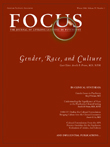From the Guest Editor
This issue of FOCUS is a celebration of human variation and its manifestations in psychiatry. Leading thinkers in the field examine the impact of race, ethnicity, culture, and gender on psychiatric care. Here the reader will find useful information about managing patients across the spectrum of difference, including “pearls” on epidemiology, diagnosis, psychopharmacology, psychotherapy, and research.
As the United States becomes more diverse, psychiatrists need to appreciate that difference from the mainstream is not deviance, and one size does not fit all. For many, it is tempting to ignore the reality of the ways in which our society is changing and what psychiatrists must learn about and incorporate into their clinical care as a result of these changes. Labeling, as some do, the consideration of race, ethnicity, and culture in clinical care as “political correctness” is counterproductive and irresponsible. The Institute of Medicine, in its report Crossing the Quality Chasm (National Academy Press, 2001), has deemed patient-centered care, with its focus on the individual’s specific characteristics and needs, one of the essential aspects of quality health care. Applying this concept to the psychiatric setting requires that clinicians take into account the totality of a patient’s characteristics and the meaning of these characteristics within the individual’s biopsychosocial context. Rather than being driven by stereotypes and assumptions, psychiatrists need to be informed by the influences of culture, race, ethnicity, gender, and other characteristics of the individual. This approach allows clinicians to develop a comprehensive understanding of the individual and facilitates the provision of well-informed, individualized quality psychiatric care.
The articles in this issue will equip the clinician with tools for navigating the diverse terrain of the clinical setting. This is both an exciting and timely undertaking. It is my hope that the information provided here will illuminate your work.



